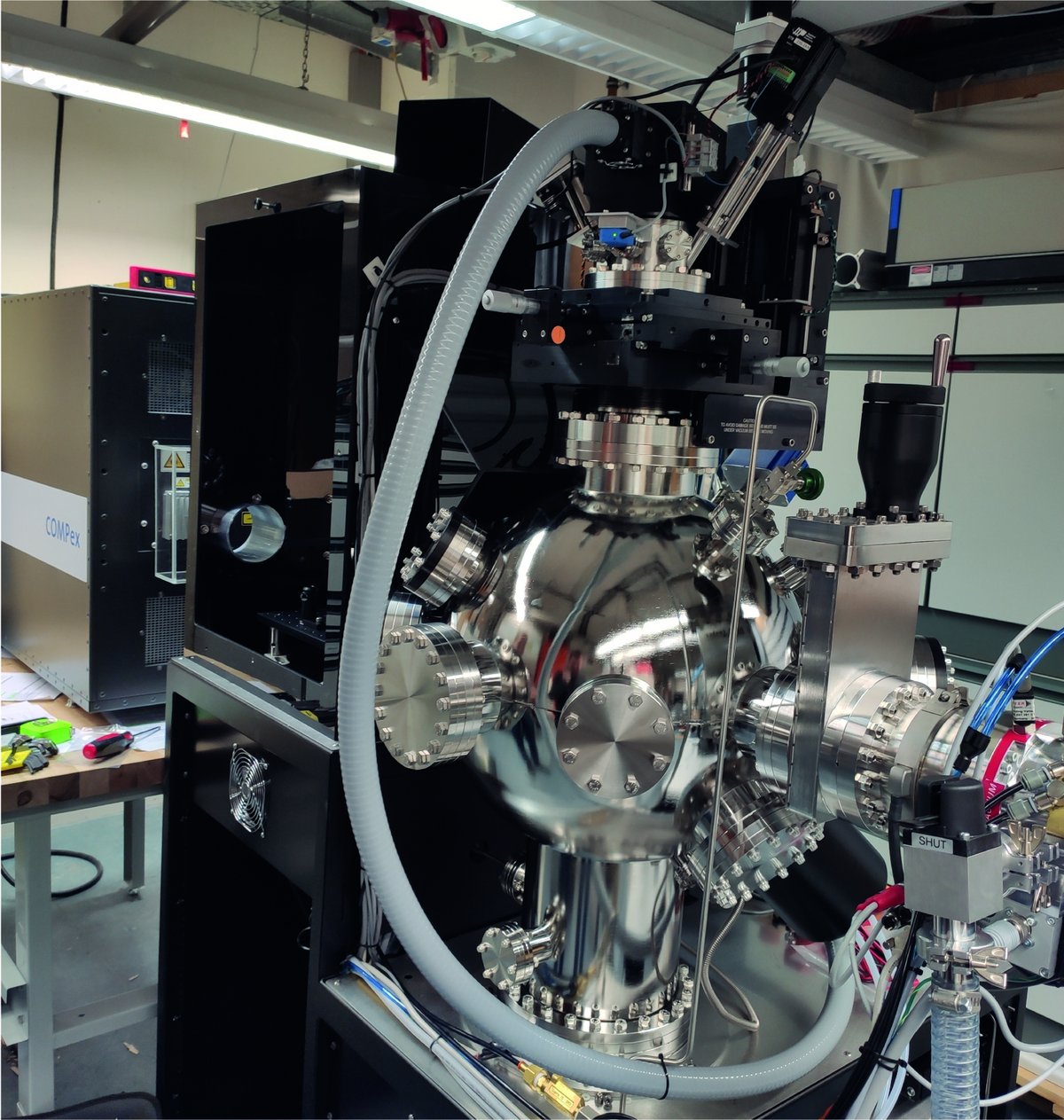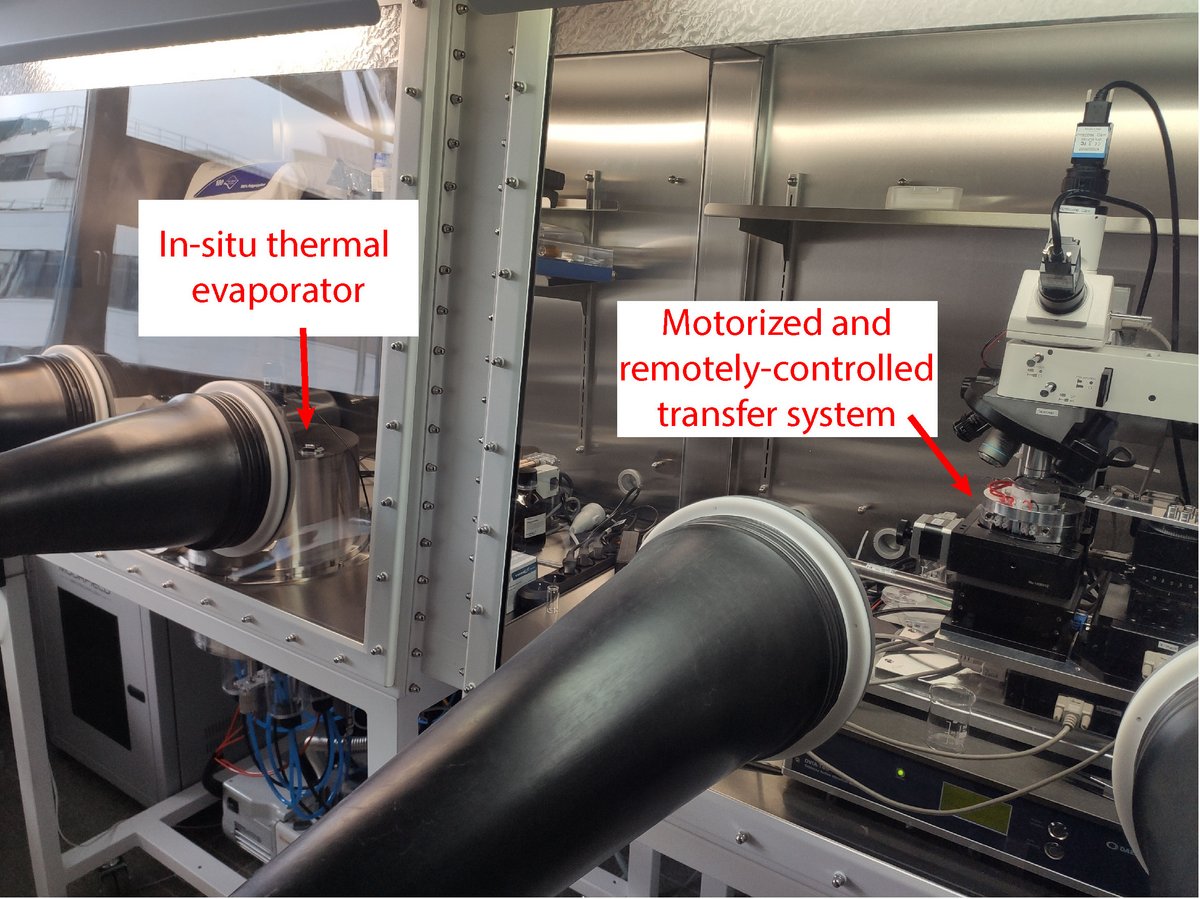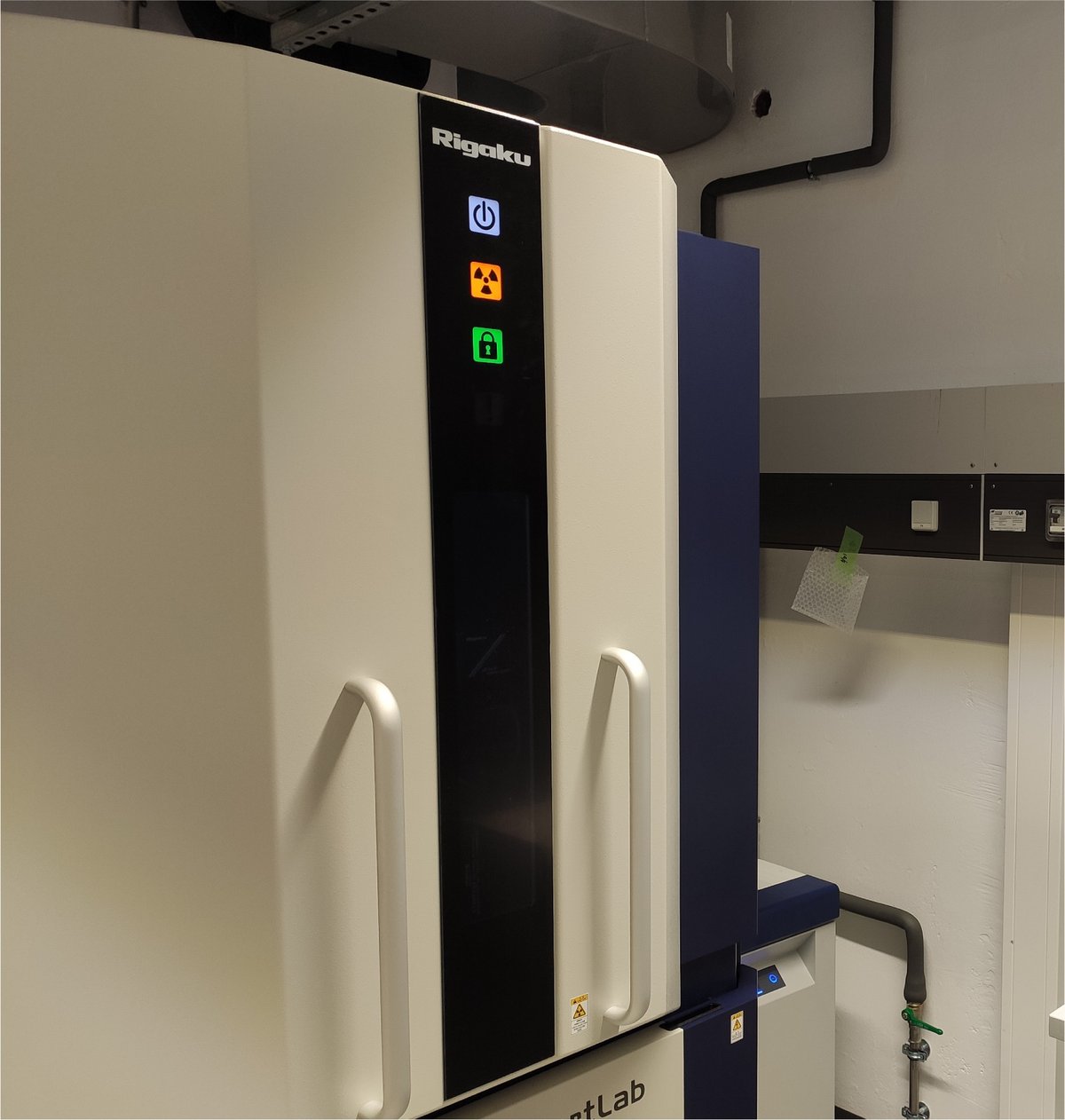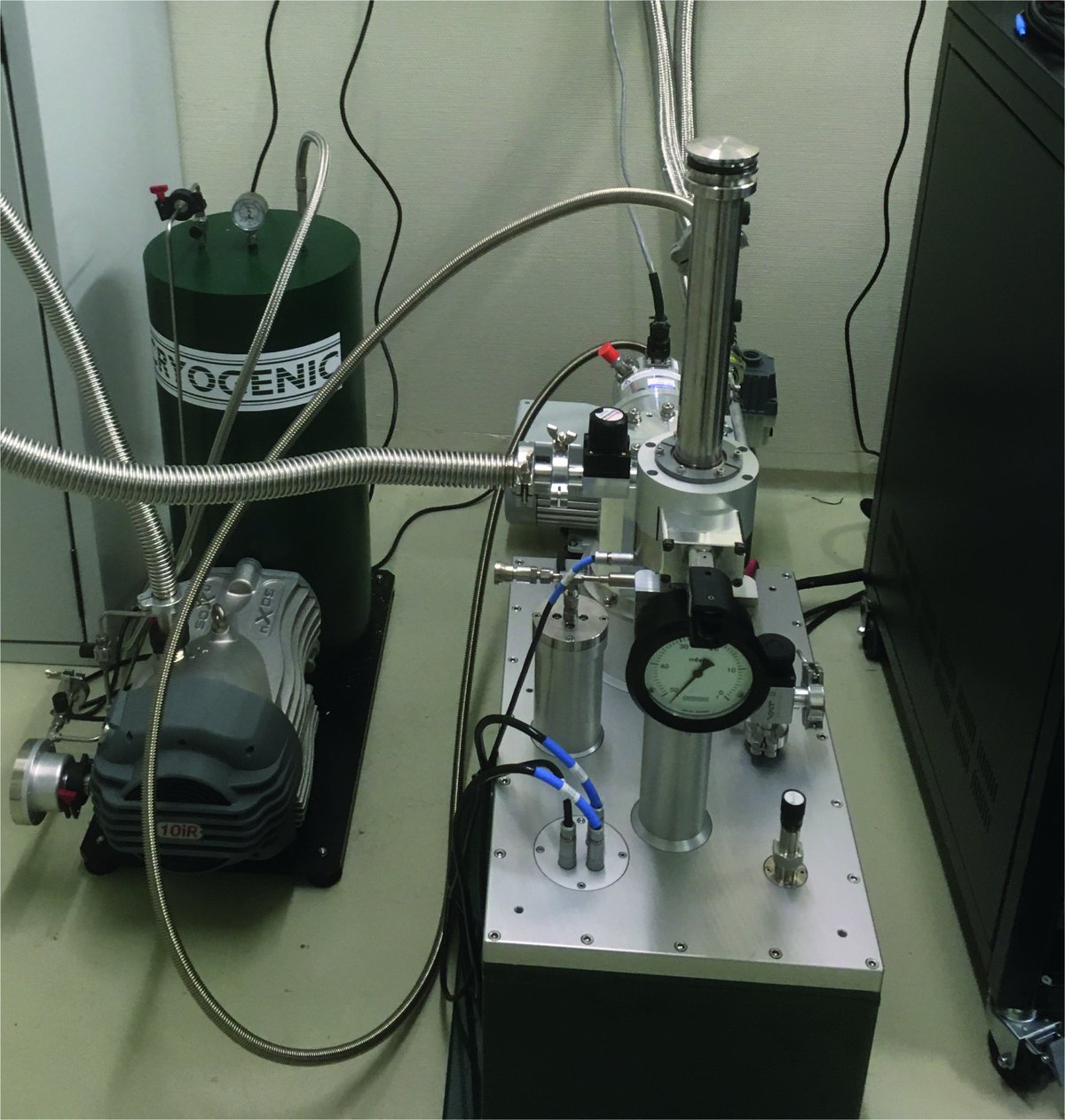
An ultra-high vacuum system offering the possibility of combined growth of oxide thin films by pulsed laser deposition (PLD) and metal (or metal-oxide) thin films by radiofrequency (RF) magnetron sputtering. The system (Neocera Ltd) is equipped with a CO2 laser heater with substrate rotation for uniform heating (up to 1100 Celsius degrees) of the substrate during growth of epitaxial thin films and it is combined with a KrF excimer laser (Coherent Ltd) for ablation of PLD targets. RF sputtering can be used for in-situ deposition of metal (or metal-oxide) thin films (e.g. Nb, Al, SiO2) onto PLD-grown oxide films without breaking vacuum.

A glovebox (ME Braun) with a optical microscope combined with a motorised stage is available for the transfer and assembly of 2D material heterostrucutres in inert N2 atmosphere. The microscope stage, which includes a heatable vacuum chuck, can be controlled remotely from a desktop installed outside the glovebox. An in-situ thermal evaporator is also installed to carry out in-situ deposition of electrical contacts to the 2D heterostructures.

A SmartLab (Rigaku) X-ray diffractomer (XRD) equipped with a Ge(220) monochromator and with software-driven alignment of optics is available. Applications of the XRD include: compositional and phase ID analysis of powder (Bragg-Bentano geometry) and thin films (Parallel-beam geometry), determination of thin film thickness via low-angle X-ray reflectometry (XRR) and determination of thin film strain via reciprocal space maps (RSMs).

A PPMS (Cryogenic Ltd) for measurement of the electronic transport properties of the samples is available in the group. The PPMS has a base temperature of 300 mK (though a He-3 insert probe) and a maximum applied field of 7 Tesla. We have dip stick probes suitables for measurements with the applied field either normal or parallel to the sample surface. In addition, we have also the possibility of performing electrical transport measurements at low temperatures under optical illumination. The setup offers the possibility of using RC-filtered connections and of applying microwaves during the measurements.
Additional Equipment
Thanks to the support of Prof. Scheer, additional equipment is available including: a low-temperature scanning tunneling microscope (STM) setup with base temperature of 300 mK, ultra-high vacuum (UHV) systems for growth of thin films by thermal and e-beam evaporation, several Oxford dewars and dilution refrigerators for magnetotransport measurements down to 10 mK and in an applied magnetic field up to 14 Tesla. Further information about such equipment and instrumentation is available on the group of Prof. Scheer here.
In addition, our group has access to all the facilities of the nano.lab and of other Departments at the University of Konstanz, which include: an UHV AJA sputtering system with 5 magnetron guns (3 RF + 2 DC), two scanning electron microscopes (SEMs) with a focused ion beam column (FIB), two transmission electron microscopes (TEMs), lithography systems (e-beam and ultraviolet), a laser writer, plasma etching and wet chemical etching systems, an ion miller, a wirebonder, an atomic force microscope, an ellipsometer, a surface profilometer, a Raman microscope.
